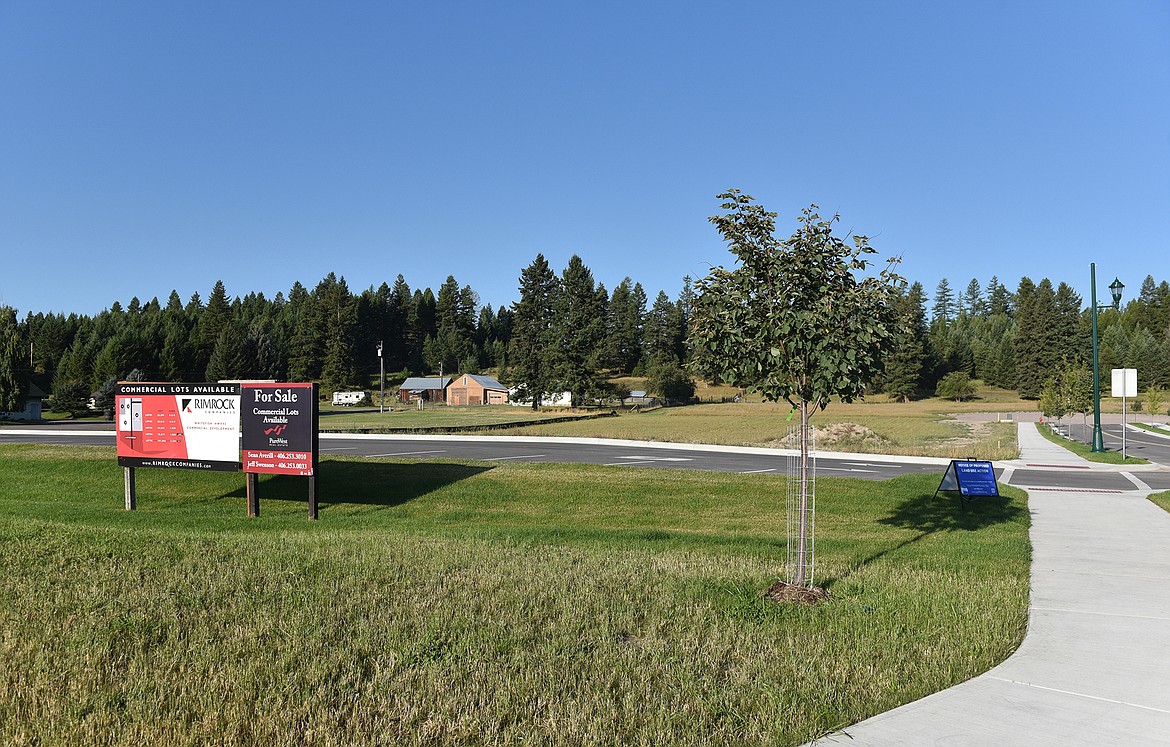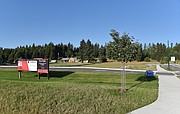Council rejects hotel for U.S. 93, approves another on Central Ave.
It was a tale of two hotels when City Council last week denied one hotel and approved another during the same meeting.
Council rejected a proposal for a hotel just off U.S. Highway 93 on the south end of town, and then later that night approved a boutique hotel planned on Central Avenue.
Council voted unanimously to deny a request from Rimrock Companies for a conditional use permit to develop an 85-room hotel on Hedman Lane.
Councilor Ben Davis said the proposed hotel does not meet the portion of the city’s growth policy that says good growth should address community needs and challenges such as affordable housing, infrastructure, and development while not exacerbating them.
“If you ask the citizens of Whitefish if this matches our community vision in this location, I believe 99 out of 100 would tell you no,” he said. “If you allow any hotel here that would allow one on every corner and I believe that’s not in line with our community vision.”
In its next agenda item, Council unanimously approved a request for a planned unit development overlay to construct a 40-suite boutique hotel, including a bar and lounge, at 38 Central Ave.
Council seemed to feel the downtown hotel provides benefits to the community.
Councilor Frank Sweeney said a downtown hotel has been part of the city’s downtown master plan for years.
“It’s always been expected and we’ve always wanted it as a community,” he said. “Yes, it will exacerbate an already crowded downtown, but that was by design. The community was going to add to that congestion when they created the master plan.”
LOCATED IN A subdivision just north of the First Baptist Church, Rimrock Companies had been proposing to construct a hotel the company said would be designed for long-term stays. A CUP is required for hotels and also large buildings in the WB-2 zone where the property is located.
Two weeks ago Council delayed a decision on the request asking city staff to return with a list of reasons for denial of the project. Council cited concerns about traffic noting the over 700 vehicle trips per day the hotel is expected to generate, the hotel is supporting tourism in excess of what can be supported by the community and its infrastructure, and that the hotel is not compatible with the surrounding neighborhood.
Councilor Rebecca Norton said she couldn’t support the project.
“We’re facing an unprecedented housing crisis and if we keep approving projects that contribute to that we’re only going to make that worse,” Norton said.
In addressing Council at the start of the meeting last week, attorney Sean Frampton, who represents the developer, questioned a potential denial of the project. He said the city’s planning report says there would be minimal impact on the transportation system because of the hotel and the hotel is compatible with the neighborhood. The Montana Department of Transportation also said the highway is adequate to handle the increased vehicular traffic.
“I know the city has said by its zoning that a hotel is allowed in this spot where they are proposing it, but we have two Council members on record saying they don’t want a hotel there,” he said.
THE DOWNTOWN hotel is planned to be constructed by Averill Hospitality on five vacant lots along Central Avenue and First Street. The hotel would include 42 on-site underground parking spaces even though there is no city requirement to provide parking downtown in that area under city regulations.
The developer plans to donate $500,000 to the Whitefish Housing Authority for workforce housing. They also plan to establish an optional 1% lodging and food fee at the hotel that will go toward workforce housing projects.
Sean Averill, speaking on behalf of 38 Central Partners LLC, which is proposing the project, said a lot of planning went into the project and its design.
“We realized there would be an impact and that’s where we came up with the donation,” he said.
During deliberations, Councilor Steve Qunell said in making the decision he had to look at what is the best use of the property. He also applauded the donation as being a benefit to the community.
“This lot has been vacant as long as I’ve been here and to put a hotel there, that drives more commerce to our downtown core, and I don’t think that’s a bad idea,” he said. “One of our goals for a long time has been to increase human traffic to our downtown so our businesses can survive.”
Council did add conditions to the PUD — that no live or amplified music be allowed on the rooftop deck, the hotel provide the city with a yearly account record of the 1% collections for affordable housing donated to the Whitefish Housing Authority in perpetuity and that no real estate or professional offices can operate on the ground floor of the building on either street.
During public comment, two people spoke against the project.
Jake Howe said the downtown hotel project is like dropping the big city into Whitefish.
“I’m opposed to this because of quality of life in Whitefish,” he said. “I’m hearing the complaints from locals and the tourists.”
Joe Courtney criticized the project for not providing parking for its employees and for the height of the building amongst other items.
“Once you’re going up 45 feet you’re setting a precedent for that and that bothers me,” he said. “When it comes to the $500,000 that bothers me because if they are really interested in helping affordable housing they would offer that outside a building project.”
The plan for the hotel building calls for the first floor to include the restaurant and bar, as well as areas for retail and services and the hotel lobby. The second and third floors would contain the hotel suites, and a rooftop area open to the public is planned as part of the restaurant and the hotel.
The developer applied for the PUD since the plan requested a deviation to the building height design standards for the property’s zoning of WB-3. The building would be 35 feet tall with only the stair and elevator towers extending to 45 feet.
City standards say that no building can be above 35 feet in height or two stories, whichever is less. The building height design standards make the development of a large hotel difficult and are more geared toward the development of individual 25-foot wide lots in the downtown rather than the development of a half a city block, according to the planning staff report.
The plan calls for the entire third floor to be flush with the first two floors and the building would be no taller than nearby buildings at 35 feet at the street, but would have three vertical stories without 20 feet setback.




